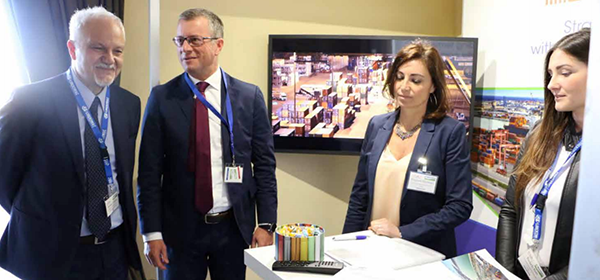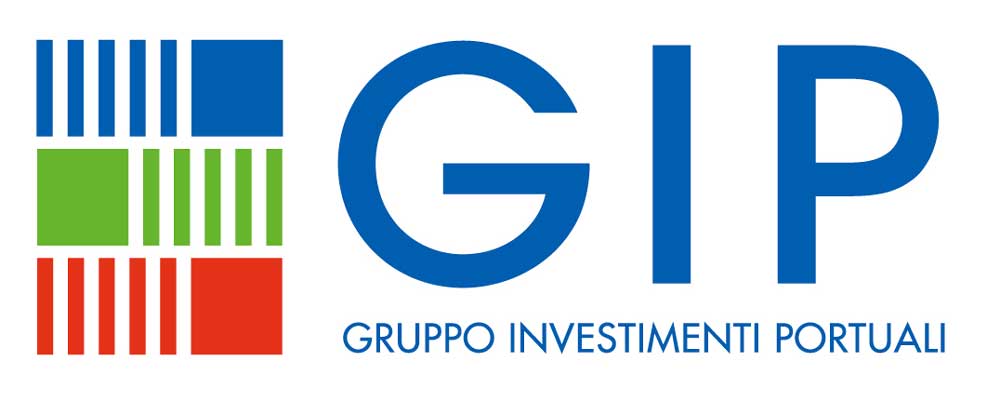
GIP: the two “drivers” SECH and TDT
LIVORNO – The 6th International Med Ports Conference saw a presentation about the unification of Livorno’s Darsena Toscana terminal and Genoa’s SECH terminal by GIP Group (Gruppo Investimenti Portuali), an operation undertaken partly to meet demand expressed by major international ship owners who have decided that these two Tyrrhenian ports of are maximum interest for traffic towards Northern Europe.
Also presented was TDT’s new logo, which features the wording “GIP Group” and symbolizes the union of its members. “GIP Group has been a shareholder in TDT since 2010 in fact,” explained GIP Group marketing manager Massimiliano Cozzani, “but it was only last year, when the equity funds Infracapital and Infravia took over, that it also started overseeing the organizational side from its Genoa headquarters.
The assets and future plans of Livorno’s biggest terminal – which is destined to be the heart of the future “Darsena Europa” – were presented by Cozzani and TDT general manager Marco Mignogna. The terminal is Italy’s biggest for reefer cargo, a sector which is seeing continual growth and recognizing the value of TDT’s rapid AEO-certified services capable of halving products’ health inspections (from 80% to 40%), with considerable time and cost savings for importers. TDT’s investments in quality certifications and technological innovation are helping to achieve the management’s prime objectives – safety, ethics and the environment – as well as ensuring service flexibility and speed.
Starting with its 1,430 meters of quay allowing four vessels to moor at once, an operating capacity of 900,000 TEUs (65% in use at present), investments in infrastructure and human resources (current workforce of 304), eight cranes with different characteristics, of which six post-panamax units capable of lifting up to 90 tonnes, dedicated break bulk areas and personnel, a northern-European level dual time (<30 minutes for import entry and exit and 20 minutes for export), RTG-operated yard (also to speed up reefer deliveries), reach stackers for both full and empty containers, two weighbridges exclusively for own clients, and scanners used by Customs. TDT is different from all other Italian terminals as it is the only one to have an internal rail system linked directly the national rail network. This makes for precision programming of rail traffic to/from TDT and facilitates the creation of new services.
Other notable assets include very good road accessibility, enabling hauliers to make more than one trip a day, the vicinity of the Vespucci Interport, and the advanced information technology used for connections with customers, the port and Customs.
Marco Mignogna then spoke of the investments already made in parallel with the Lorenzini terminal, and with the AdSP of course, to widen and deepen the Marzocco channel, which now has a useful width of around 90 meters and a draught of 13 meters. The Port Authority has granted access, in fact, to vessels 325 meters long and 43 meters wide, or 300 meters long and 48 meters wide, with capacities of up to 9,000/10,000 TEUs. “We’re working to increase these dimensions even more to attract certain services interested in using Livorno,” added the general manager, “and in the meantime we’ve upgraded the lighting to make it easier for larger vessels to leave at night. The narrow channel will be widened to 120 meters by 2021, with a draught 16 meters thanks to the new micro-tunnel into which the ENI pipelines will be moved. In parallel, AdSP will invite tenders for pier construction, dredging and removal of the old pipes at a depth of 13 meters”. In the interests of the environment, the dredging and wharf construction work, according to the Livorno port cluster, could also be carried out with new and approved ecological systems already tried out by Decomar in Livorno, which also allow for virtuous re-use of silt for pier construction. Completion of works is scheduled for the start of 2021.
“Thanks to this initial widening of the channel,” said Mignogna, “there could shortly be interesting news for new services regarding the Middle East. We’re focusing on developing our rail capability to improve competitiveness with Northern Italy, while we’re planning to invest in more RTGs in 2019. We’re also considering remote operation with a number of electric RTGs to improve terminal operations and quayside safety at the same time”.
In GIP’s strategic vision, the two terminals – Livorno and Genoa – can work in synergy, and positive results are already being seen. Lastly, regarding the Europe Platform, the project still makes sense in the geographical context, despite current oversupply at the terminals, and the Group intends to participate in upcoming tenders to ensure continuity for GIP’s Italian business.
Cinzia Garofoli


